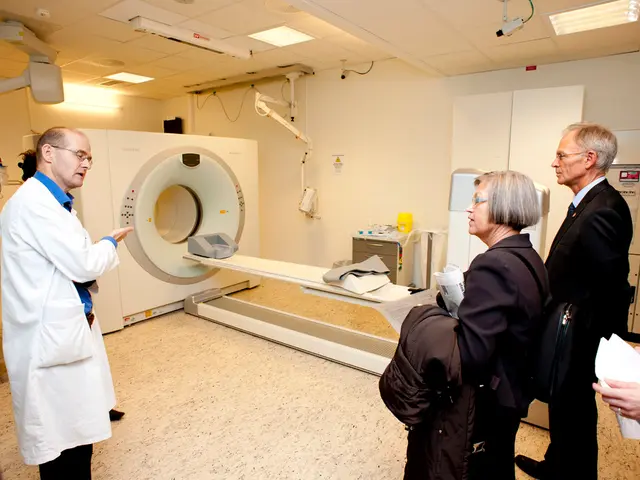Menstrual Pain (Mid-Cycle Cramps): Potential Indications
Mid-cycle and implantation cramps are common experiences for many women, but understanding their differences and causes is essential for managing reproductive health.
Mid-cycle cramps, also known as mittelschmerz, typically occur around the time of ovulation, about midway through the menstrual cycle. They are often described as a mild to moderate twinge or dull ache on one side of the lower abdomen, corresponding to the ovary that is releasing an egg. This pain, which usually lasts from a few minutes to a couple of days, signifies normal ovulatory activity.
In comparison, implantation cramps occur roughly 6 to 12 days after ovulation, when a fertilized egg attaches to the uterus lining. They are usually milder, described as a dull ache or mild cramping, and tend to be short-lived, typically less than a day. Implantation cramps might sometimes be accompanied by light spotting (implantation bleeding).
| Characteristic | Mid-cycle Cramps | Implantation Cramps | |----------------------------|--------------------------------------|---------------------------------------| | Timing | Around day 14 (mid-cycle) | About 6-12 days post-ovulation | | Cause | Ovulation (egg release) | Fertilized egg attaching to uterus | | Pain type | Mild to moderate twinge or ache | Mild, dull ache | | Duration | Minutes to a couple of days | Usually less than a day | | Associated signs | Sometimes one-sided lower abdominal pain | Possible spotting, very light bleeding |
Mid-cycle cramps differ from menstrual cramps and other health conditions. Common menstrual cramps (dysmenorrhea) occur shortly before or during menstruation and are caused primarily by prostaglandin-driven uterine contractions, causing lower abdominal or back pain that can range from mild to severe and last 1-3 days.
Secondary causes of pelvic pain can include ovarian cysts, pelvic inflammatory disease, endometriosis, infections, urinary tract infections, or ectopic pregnancy. These tend to cause more severe, persistent, or unusual pain that may not follow the timing pattern of ovulation or menstruation and often require medical evaluation.
Implantation cramps are generally much milder and briefer than menstrual or ovulation cramps and are linked specifically to early pregnancy events. If cramps are severe, persistent, or accompanied by other symptoms such as heavy bleeding, fever, or unusual discharge, it is important to seek medical care to rule out conditions such as endometriosis, infections, or complications like ectopic pregnancy.
In summary, mid-cycle cramps are mild, ovulation-related pain occurring mid-cycle. Implantation cramps are mild, brief aches related to early pregnancy implantation. Menstrual cramps are caused by uterine contractions near menstruation and can be more intense. Understanding the timing, duration, and accompanying symptoms can help differentiate among these causes.
Nausea, a frequent urge to urinate, fatigue, and vomiting can be early signs of pregnancy. Increased cervical mucus is a symptom that can occur during ovulation. Some people may not experience any symptoms during ovulation. Ovulation occurs midway through a person's menstrual cycle, when an ovary releases an egg. Implantation cramps can occur after fertilization and are caused by the fertilized egg implanting into the uterus. Spotting or light bleeding can occur during ovulation. Not everyone who menstruates experiences ovulation cramps, with about 1 in 5 people reporting cramping around the time of ovulation.
For those who wish to avoid unintended pregnancies, it is important to note that relying on ovulation cramps to determine safe times for sex without a condom or other barrier method is not recommended. An individual can consult a healthcare professional about other natural family planning methods, such as calendar tracking and cervical mucus checks, to determine ovulation and fertile times.
References: [1] American College of Obstetricians and Gynecologists. (2016). Dysmenorrhea. Retrieved from
- Understanding the differences between mid-cycle and implantation cramps is crucial for women's health-and-wellness, especially when it comes to managing reproductive health.
- Despite being mild, mid-cycle cramps can provide insights into normal ovulatory activity, thus signifying a type of disease that women might experience during their menstrual cycle.
- Psoriatic arthritis and ankylosing spondylitis are autoimmune diseases that can lead to joint pain, stiffness, and swelling, causing discomfort for women in their breast area and potentially impacting their overall health.
- Depression, bipolar, diabetes, hepatitis, and cancer are diseases that women might have to deal with, and understanding their symptoms and causes is essential for seeking appropriate treatment.
- Crohn's disease, an inflammatory bowel disease, can also affect women, causing abdominal pain, diarrhea, and weight loss, which might be mistaken for normal menstrual cramps.
- Predictive science plays a significant role in identifying early signs of various diseases, such as cancer and diabetes, enabling early interventions and treatments to improve women's health outcomes.
- Asthma is a chronic respiratory disease that affects women, causing symptoms like shortness of breath, chest tightness, and coughing, making it important to focus on health-and-wellness and disease management.
- Ovulation type and related symptoms can be useful in predicting fertility, providing insights for women's health and family planning.
- Endometriosis, a condition in which the tissue similar to the lining of the uterus grows outside of it, can cause severe pelvic pain, lengthy menstrual periods, and infertility, making it crucial for women's health and well-being to seek appropriate treatment.
- Women's health encompasses all aspects of physical and mental well-being, including reproductive health, chronic diseases, and mental health disorders, necessitating a holistic approach and support from healthcare professionals.
- With the right knowledge, early detection, and proper care, women can navigate their health journeys effectively, ensuring good health and quality of life.




